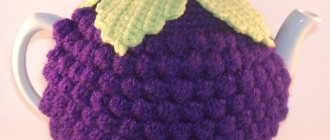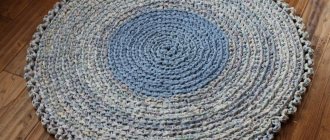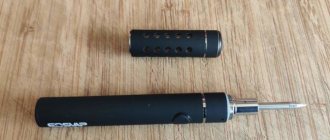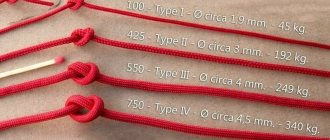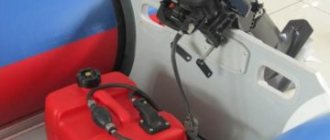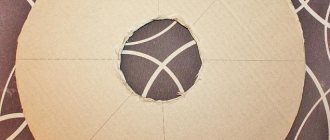Medical heating pad
The rubber heating pad is filled with hot water.
Then it is wrapped in several layers of fabric and applied to the sore spot. Contraindications to using a heating pad are bleeding, acute pain in the abdomen, and purulent processes. There is also a chemical heating pad. It differs from rubber in that it should not be filled with water. To use it, just knead it several times. It contains a special chemical composition that heats up on its own. This heating pad is very convenient when hiking or fishing because it is light and small in size.
The electric heating pad is very convenient to use. Many people prefer it because of the ability to regulate and maintain the temperature for a long time.
Salt heating pad. Contains sodium acetate and applicator. This applicator contains a special solution, which, when bent, enters into a chemical reaction with the saline solution. To do this, the applicator must be bent. To reuse the heating pad, wrap it in cloth and place it in boiling water for 15 minutes. A salt heating pad is used not only to warm parts of the body, but also to heat equipment when working in the cold.
Winter came unnoticed, I felt it when on the way to the store my hands became very cold. Of course, I know about gloves, but they don’t provide heat, they only keep our hands warm. So I decided to whip up a mini heating pad just for my precious hands. There are plenty of hot water bottles of this kind in the markets, but I still wanted to make my own.
There are heating pads on sale with a flammable mixture inside; these are long-reserve camping heating pads based on the principle of catalytic combustion. There are also electric heating pads with a built-in battery and heating element.
A long time ago I bought several power banks with a metal case, and the heating pad was assembled on the basis of this case.
My heating pad will be electric.
I bought an infrared heating element on Aliexpress, which is used as a heater for a heated floor; it is also used to wrap water pipes so that the water in the latter does not freeze. Well, in general, there are a lot of areas of application for such a heater.
The heater consists of two parts - a resistive fiber material that actually heats up, and heat-resistant flexible insulation. Such heaters are powered from the network; 10 meters of such wire consumes about 160 watts when powered from a 220-volt network. It was this material that I decided to use in my heating pad.
I experimentally selected the optimal power of the heating element; for this, a nichrome heater was used. I wound the wire around the aluminum frame of the power bank and selected the length so that, when powered by 12 volts, the case would heat up to 50 degrees in a maximum of 20-30 seconds. In the end, I discovered that this requires a heater with a power of about 6 watts.
Knowing some initial data and Ohm's law, you can easily calculate the required length of the heater, but you need to take into account that as it heats up, the resistance of the heater will increase, therefore the power will decrease, length and resistance are not so important in my case, since everyone will calculate the heater individually depending on the supply voltage and heater length.
The heater will be powered by just one lithium can of the 18650 standard, but not directly, but through a boost converter; you can do it without it, but in order to get the required power from 3.7 Volts, you need to shorten the length of the wire and connect several in parallel. To avoid the collective farm, I decided to use a converter; in this case, the heater will be solid and will stretch along the entire length of the sleeve, thereby ensuring uniform heating.
The battery in the heating pad must be protected, otherwise it may fail due to deep discharge.
I kept some distance between the turns of the heater, getting something like grooves for the fingers, so that the heating pad fits perfectly in the hand.
A cheap MT3608 board is ideal as a boost converter; we supply 3.7 Volts to the input of the board and by rotating the trimming resistor at the module output we set it to 12 Volts. My case turned out to be too small and the converter board simply didn’t fit, but I didn’t want to change the case, so in the end I decided to modify the inverter board with wire cutters, and this is what happened.
The dimensions decreased by two and a half times.
Let's take measurements of power and operating time. We apply a voltage of 3.7 Volts to the inverter input, simulating a battery, and connect a heater and a wattmeter to the inverter output.
Consumption from the battery is slightly less than two amperes, of which about 100 mA is consumed by the wattmeter itself, which is a little more than 7 watts at the input, and at the output we have 4.5-5 watts, an efficiency of about 70%. Naturally, without an inverter there would be fewer losses. But even taking into account all this, a 2200 mAh battery will be enough for a little more than an hour of continuous operation of the heating pad, and if this is not enough, you can take a 3400 mAh battery.
Heat-resistant tape is wound on the aluminum body of the power bank; in principle, it is not needed; it was originally used for thermal insulation of the case. This is necessary so that the battery does not overheat, but later tests showed that most of the heat will be directly transferred to the hand, and the temperature inside the case is not critical.
Despite the stripped-down converter board, I had to lengthen the case, since I completely forgot that at the beginning I planned to cram a USB charging system in here.
The heating pad is turned on by a button without locking.
The button is located directly under the thumb, which is convenient no matter which hand you are holding the heating pad in. The button here is not easy to use, since the heating pad will mainly be in your pocket, there is no guarantee that you will not leave it on, but with the button there will be no such problems, let go and everything turns off.
The charging circuit is based on TP4056 , nothing new. This fee also had to be reduced.
Well, now turn on the heating pad and measure the temperature.
I think the result is excellent, if you hold the heating pad in your hand, part of the heat will be removed by the hand itself. and if it is too hot, the temperature can be reduced by reducing the output voltage of the inverter; it’s not for nothing that I made a hole for adjustment.
The coils of the heater can be glued with superglue or epoxy, or you can seal everything with thermal tape.
The case does not have to be the same as mine; aluminum sleeves from some capacitors are excellent for these purposes.
By the way, you could leave the original power bank board and recharge the phone if necessary, but this option was of no use to me.
Finally, we seal the heating pad with aluminum self-adhesive film or aluminum tape.
It looks unimportant, but heat is transferred more evenly.
The heating pad was tested more than once and did its job perfectly.
Buy a hand warmer https://ali.pub/255q41 and https://ali.pub/255q6d Heater https://ali.pub/255fa6 Charging board TP4056 https://ali.pub/255fbj Converter MT3608 https:/ /ali.pub/255fcp 18650 battery https://ali.pub/255f63 Power Bank metal https://ali.pub/255fe9
Sincerely - AKA KASYAN
How to replace a medical heating pad?
The easiest way to warm a sore spot if you don’t have a heating pad on hand is to replace it with a regular plastic bottle of hot water. To avoid getting burned, you need to wrap the bottle with several layers of fabric. Do not pour very hot water, as the bottle will begin to melt. The only negative is the small heating area.
You can make your own cloth bag of salt. To do this, you need to warm it up and pour it into a bag, distributing it evenly there. This homemade heating pad retains heat for a long time. Sand can be used instead of salt.
Mustard plasters also warm a sore spot well. This remedy contains mustard seed powder. The mechanism of action of mustard plasters is the irritation of the skin by mustard, which leads to increased blood circulation, resulting in vasodilation. Mustard plasters are used for bronchitis, pneumonia, osteochondrosis and muscle pain. Contraindications to the use of mustard plasters are damaged skin, allergies to components, body temperature above 37 degrees.
You can use traditional medicine. For example, boil potatoes, crush them and stuff them into a simple sock. If you need to warm up your nose, you can use boiled eggs wrapped in several layers of cloth. As it cools, each layer is removed.
Design and use of heating pads
The design of the electric heating pad is very simple: the base, consisting of hypoallergenic materials that are pleasant to the touch, has heating elements – heat conductors – sewn into it. They are evenly distributed over the entire area. To change and maintain different temperature conditions, a thermostat is provided, which also prevents overheating of the product.
The use of a heating pad is recommended:
- To protect against hypothermia;
- For radiculitis, osteochondrosis, arthritis, and other diseases of the spine and joints;
- In inflammatory processes with a chronic course;
- During the recovery period after bruises, dislocations, fractures and other injuries;
- After heavy physical activity to relieve muscle spasms and reduce pain from overexertion;
- To speed up recovery from colds.
A heating pad is used not only for illnesses. This device will come in handy after a long walk in the cold season, during a spring or autumn heating outage, or in a country house on cool evenings.
Heater + camping stove for heating food from cans - alcohol lamp
The design is known abroad as an alcohol stove, or in Russian - an alcohol lamp. The Swedish army has even adopted it.
Alcohol is used because it does not smoke when burned. This means the dishes remain clean and no soot or smoke floats in the air. The design is as simple as 3 kopecks and can be repeated in a few minutes from any available materials. For example, a beer can, coffee can or condensed milk can be used as a donor for the stove.
More specifically: you need a small iron container with an iron lid, or you will have to cover it with something.
The author used a can of Korenovsky condensed milk - it is convenient because there is an almost airtight lid on top, but even without it everything will work if there is a flat-bottomed dish on top.
So: we take a jar, a ruler, a strip of checkered leaves and a marker or any drawing or scratching object.
1. Mark a stripe on the can, moving one third from the top. The easiest way to do this is by spinning the jar while holding the marker in one position.
2. We wrap a strip of paper around the edge of the mark and fasten it with a piece of tape or glue.
3. We begin to drill, pierce with an awl or cut holes with a knife along the marked strip. In this case, I made a series of holes with a diameter of 0.8 mm through 10 mm and through 5 mm - which option is better for you - decide for yourself. You can see how they burn below. A small hole diameter for proper combustion is better than a large one, but you can make 3-5 holes a centimeter each. The uniformity of the holes is a purely aesthetic point in order to get a beautiful crown of flame like from a regular gas stove. All!
Well, not quite of course, now we’re learning how to light it up. You need to add alcohol and close the lid, 50 ml burns for 15 minutes or more. Place on a non-flammable surface and shake lightly so that the alcohol flows a little onto the outside of the jar through the holes. We light the alcohol outside and wait until it burns out. We repeat the procedure until we get a self-sustaining flame from improvised nozzles around the can. Usually it is enough to repeat 2-3 times and everything starts working on its own.
Its operating principle is simple: the flame heats the walls of the jar, the heat is transferred down the walls to the alcohol, the alcohol boils near the walls and the pressure inside increases, the alcohol vapor comes out under pressure through the holes and mixes with air and burns beautifully. Now we put a pot, a kettle, a mug on top, or we just warm ourselves around the stove - it gives a lot of heat and burns for a long time.
For greater heat transfer, you can place a homemade alcohol lamp in a larger iron container, which would heat up and release heat:
The smaller the number of holes, the harder it is to light, but the less fuel consumption and less heat from it. A liter of water boils in less than 10 minutes. It is resistant to wind, extinguish by covering, add as much fuel as needed, otherwise you will have to wait for it to burn out or pour the hot alcohol back into the container, which is not safe.
Similar options “for one mug” from a tin can with a filler hole that is closed with a coin and from an aerosol can:
Necessary materials
It is not necessary to go to a specialty store and spend money on buying a thermal device. Fans of winter fishing can build their own hand warmer. Let's give an example of making a chemical heating pad.
To do this you will need the following available materials:
- a 200 ml plastic bottle for shampoo, lotion or other similar products;
- aluminum wire with a diameter of 3 mm and a length of 400 cm;
- copper sulfate in the amount of three parts of the volume of the selected container;
- two parts of finely crushed table salt;
- plain water – 50 ml.
You can also use glass containers to make a homemade heating pad. In addition, experienced fishermen advise adding sawdust to the solution. For the amount of materials suggested above, you will need about 30 g of sawdust.
Types of heating pads
Today, customers have access to a wide variety of heating pads with many useful features and modern designs. To choose the appropriate option, you should first decide on the purpose of purchase and method of use, because devices can be very different:
- Foot warmers – electric boots. Such models are indispensable after a difficult day at work, a long walk or an intense workout. There are models that not only warm, but also massage, allowing you to completely relax and get real pleasure;
- A heating pad in the form of a belt - designed to warm the back and abdomen, help with radiculitis, rheumatism, and muscle strain;
- Heating pads for the neck and shoulders in the form of a cape - indispensable for hypothermia, they activate blood circulation and have a restorative effect;
- Seat warmers – relieve pain in diseases of the spine, radiculitis;
- Models for the back and neck - relieve muscle tension, used for bronchitis and seasonal diseases of the respiratory system;
- A heating pad is a convenient device for the body, as well as a stylish interior decoration for the home;
- A classic flat heating pad that can quickly warm you up during the cold season.
Electric blankets and sheets are very popular. Structurally, they are similar to heating pads, but differ in their large area and some functions.
Enzyme-enriched preparations
Enzymes are special substances that help break down nutrients (in particular milk sugar) in the intestines.
Modern medicines mainly contain digestion catalysts such as amylases, lipases and proteases. Of all the drugs containing enzymes, infants are most often prescribed:
- Mezim;
- Creon;
- Lactazar (the latter is recommended exclusively for lactose deficiency and may be completely useless in all other cases).
Candle heater
The candle flame shines quite pleasantly, but trying to warm up with it seems crazy. Meanwhile, just as a light source, a candle is an extremely wasteful device. But as a room heater it can be useful. Under a number of conditions.
Californian inventor Doyle Doss and his company DOSS Products offer the original Kandle Heeter system, that is, the “Candle Heater”.
This strange-looking candlestick, its creator claims, can be indispensable during a power outage. Its height is about 23 and its width is about 18 centimeters.
And from its appearance, the inverted pot above the candle attracts attention. The main highlight of the system is hidden in this pot (and in a “past life” it was a flower pot).
This pot is not simple, but composite. It is made of three pots of different diameters, nested one inside the other and connected by a long metal bolt, on which a whole bunch of washers and nuts are strung (fortunately, the pots usually already have holes in the bottom).
An ordinary candle, burning in a room, produces, as it seems, very little heat. But the point here is that its hot “exhaust” simply goes up and quickly evaporates with the ventilation.
Meanwhile, the energy reserve in a candle is not so small. Moreover, with the hot flow of combustion products, most of its energy content leaves, and only a smaller part is converted into light.
The labyrinth cap above the flame collects energy and carefully stores it, heating up quite strongly (the central rod is especially hot). And then this heat is slowly transferred to the air by the entire surface of the ceramic radiator.
The pots also help trap soot from the fire, which helps keep the ceiling clean.
How many times a day can you use a heating pad?
Apply to the affected area for NO MORE than 15 minutes. Place a layer of towel between the skin and the heating pad. Remove for at least 1 hour, then repeat. Recommended 2-3 applications per day
.
Interesting materials:
How many times should you boil a new kettle? How many times should I rinse after descaling? How many times a day can I use the washing machine? How many times a day can you win gems in Cooking Fever? How many times a week should you swim to get better? How many times a week should you use an infrared sauna? How many times a week should you vacuum your carpet? How many times can you use Nespresso capsules? How many times can you burn a disc? How many different ways to wear socks and shoes?
Recommendations
When choosing which brand is the best hand warmer, it is advisable to take into account several important tips on what to pay attention to:
- The popularity of the model directly depends on the manufacturer - choose products from well-known brands and large, reliable companies.
- When choosing how much a device costs, it is better to pay attention to not the cheapest ones, if these are not disposable self-heating devices. The cost of a good hand warmer should not be excessive, but proportional to the quality.
- When choosing the type of heater, you should take into account ease of use: for a gasoline heater, you will need an open flame source for ignition, for an electric one, you will need the ability to plug it into the power supply.
- If you are puzzled by how to make such a device yourself at home, then this is a completely solvable task for a person familiar with the laws of physics and thermodynamics: make a catalytic hand heater according to the diagram or sew it according to a fabric pattern while maintaining the basic functional characteristics.
My own master
How to heat at least a small room or heat/cook food in the absence of such an achievement of civilization as electricity? The review contains advice and instructions from people who have already encountered such a pressing problem.
In a situation where the room is cold, the heating is not working and the electric heater either cannot be turned on, or not in the right way - there is no light, for example - anyone can find themselves. And Lugansk residents are already familiar with the ban on using electric heaters due to the danger of overloading power lines, which could lead to a complete shutdown of the city from electricity, as the Lugansk City Council warns about almost daily.
And if in the summer, in the absence of light, the only question is how to prepare food, then with the onset of cold weather, the problem of heating the room becomes no less acute.
But, as they say, the need for invention is cunning. And Lugansk residents are not the only ones who are faced with the problem of heating a room in the absence of basic amenities of civilization. Below we have collected popular and tried-and-true methods for heating a small (!) room, heating food and improvised heating pads from scrap materials.
Anti-colic medications prescribed for newborns
Anti-colic medications for newborns are produced primarily in liquid form.
Medicines for newborns are available in both liquid form and capsules. The latter should under no circumstances be given to the baby in their “pristine” form.
The capsule should be broken, and the powder that spills out should be diluted with water or breast milk. Typically, to relieve colic in newborns, pediatricians prescribe drugs from one of the following groups:
- containing probiotics;
- based on a special active ingredient “simethicone”;
- rich in digestive enzymes;
- based on natural herbs.
Let us consider the advantages and disadvantages of each of the listed types in more detail.
Safety of electric heating pads and blankets
People often have doubts about whether a heating pad is dangerous or whether there is a risk of an electric blanket or sheet catching fire. This possibility can arise in two cases: when purchasing low-quality devices or improper use of the product.
To use electric sheets, blankets, and heating pads without fear, you should choose products from trusted manufacturers with good reviews. For example, just look at the characteristics of devices of this type from the German company Beurer, which are distinguished by a high level of safety:
- Heating pads, blankets and sheets turn off on their own after a certain time, so you can fall asleep with them on;
- Many devices are equipped with a timer;
- Beurer has developed a special security system that turns off the device if the slightest malfunction occurs;
- There are models that connect to a special mobile application that simplifies the management of all functions.
It is worth noting that if the security system is triggered, the electrical appliance cannot be turned on again. To identify the malfunction, contact a service center.
Creative porridge
Good day! The weather has been cloudy in St. Petersburg for a week now, alas, but it’s damp and dark outside. Catching a cold is as easy as shelling pears. If you feel unwell, a dry heating pad will help restore your cheerful state, which is very simple to do.
What are the benefits of a dry heating pad? It, like rubber, retains heat for a long time, but does not burn. As a filler, you can use rock salt, cherry pits, wheat grains, and nut shells. You can apply a few drops of eucalyptus or lavender aromatic oil to the salt. Each filler has its own heating time and heat release. Compared to rubber heating pads, a dry heating pad is much lighter, so it can be used safely by small children. Girls can also use it as a warm compress to relieve pain. A dry heating pad made from nut shells or berry seeds has an uneven surface that can be used in the treatment of flat feet or as a massager.
